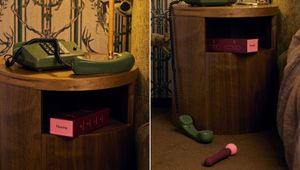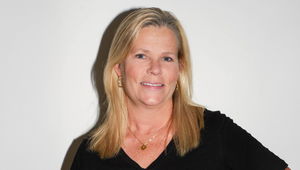
Remote Shooting in Australia: Is It Here to Stay?

With Australia setting such a stellar example for its handling of the Covid-19 pandemic, it’s no surprise that the country became a hotspot for remote shooting towards the latter end of 2020. Thanks to an easing of restrictions surrounding filming, the country was inundated with international scripts and briefs. This period brought about many changes, positives and learning curves for agencies, creatives and directors.
The Producers’ director Mitch Kennedy found that remote working meant less time was wasted on set and communication was made a lot clearer. “One of the great positive changes to come out of this crazy period for production, is that I feel we’re much more efficient and thoughtful about processes on set. Our industry was already progressively becoming nimbler and working smarter with the help of technology, but it’s as though the pandemic has forced us to move forward in one big leap.”
Mitch’s fellow The Producers’ director Lou Quill also agrees with this, and despite missing being on set with a full team of creatives, remote shooting meant that she was able to direct a night shoot from home while seven months pregnant. She credits a rise in technology for creating opportunities to “collaborate with diverse creatives and artists anywhere and at any time” and being as close to the “real thing” of on-set directing. Photoplay’s Gary John agrees that a rise in technological advances has allowed the process of remote shooting to be possible.
He explains how it helped his team on a completely international shoot: “While Covid has forced us all into working more from our bubbles at home, it has, somewhat ironically, shown us that we can work more globally with relative ease: on a recent shoot for Indiana Farm Bureau Insurance, I was working with creatives in Indiana, Chicago, and L.A. while I was in Auckland and my producer in Sydney.” He jokes that the constant Zoom calls mean not only maintaining clear communication but also a clear living room. However, Gary wonders if being able to communicate remotely may mean that in-person meeting and shoots could become a thing of the past.
Clemenger BBDO Melbourne’s ECD Rich Williams disagrees with this, and for him while remote shooting was a “wonderful solution” when there were restrictions for filming, he believes it is not sustainable in the long term. “In a perfect world the remote shoot is the answer. But we all know we don’t live in a perfect world. Things go wrong on shoots, decisions need to made on the fly, locations need to change, scripts need to be rewritten, talent need to be replaced, and the weather and clients rarely behave as they are forecast.
“In a post-Covid world I worry that in the race to the bottom in saving money and time it may remain as an unwanted legacy. Being on set is an intimate experience. It often bonds the client, the creative and the director to push for a more creative outcome.” And he jokes that, if this weren’t enough, he would hate to lose out on the perks of the trestle tables full of food on demand.
PSN Australia’s EP Andy Wareham had a different experience with remote shooting and despite having an influx of briefs, at first very few actually converted to shoots. “For many overseas production companies and agencies, handing over a job to be remotely produced, with no one actually attending the shoot from their end, was a massive leap of faith that felt a step too far.”
As the need for shoots increased, so did the confidence of international clients, who realised that shooting in the likes of Australia and New Zealand was the only sensible solution. The team at PSN went on to complete campaigns for McDonald's, Subway and Dominoes. Andy explains: “The ensuing production spike has resulted in increased opportunities for Australian based directors. It will be interesting, once the world gets back to some sort of normality, whether the remote shooting model continues to be seen as a viable option. I think we will at least see some continued demand for a hybrid of what we currently offer, with far fewer people travelling, even when they are able to do so.”
Good Oil’s director Fiona McGee, who is repped by production companies across the globe, found that the finished product “doesn’t suffer” by remote shooting, but the trust between agency and production needs to be there from the start to avoid any sort of rift. Aside from the production process, the initial stages of choosing a cast can cause the biggest problems. “I’m not a fan of remote casting because it’s always great to gauge performance in the room. There are certain things as a director you must gauge in person with casting; chemistry, good vibes, bad vibes and stage parents!”
electriclimefilms’ junior creative André Rodrigues agrees with Fiona’s belief that it is imperative that director and talent are together for shots to provide an emotional angle to bring the film’s vision to life. “However, with today’s advanced technology, we’re able to overcome limitations and achieve that even when the director isn’t physically there. That, I’ve found, has further built rapport between our teams and advertising partners, as clear and collaborative communication is more vital than ever.”
While remote shooting had a surge over the last year, the post-production and animation industry was also affected. Despite post-production and CGI being a mainly remote aspect anyway, Limehouse studio saw a huge influx in new clients asking for CGI work. Head of CGI Chris Andrews and creative director James Lucas explained that a rise in restrictions meant that more people were turning to “smarter” production and the end result was that the team grew by four hires, an upgraded studio and a whole new edit suite.
They explain: “It feels as though the industry really banded together to become a collective creative community and surprisingly we feel closer as a team and to our clients. Less travel and distractions with WFH has meant more time to think and more person-to-person conversations – giving us better insight into the idea behind the idea and allowing creativity to flow. Collaboration is key and there are benefits to remote working, just as there is to studio time and a beer. Remote production in some form is here to stay.”















